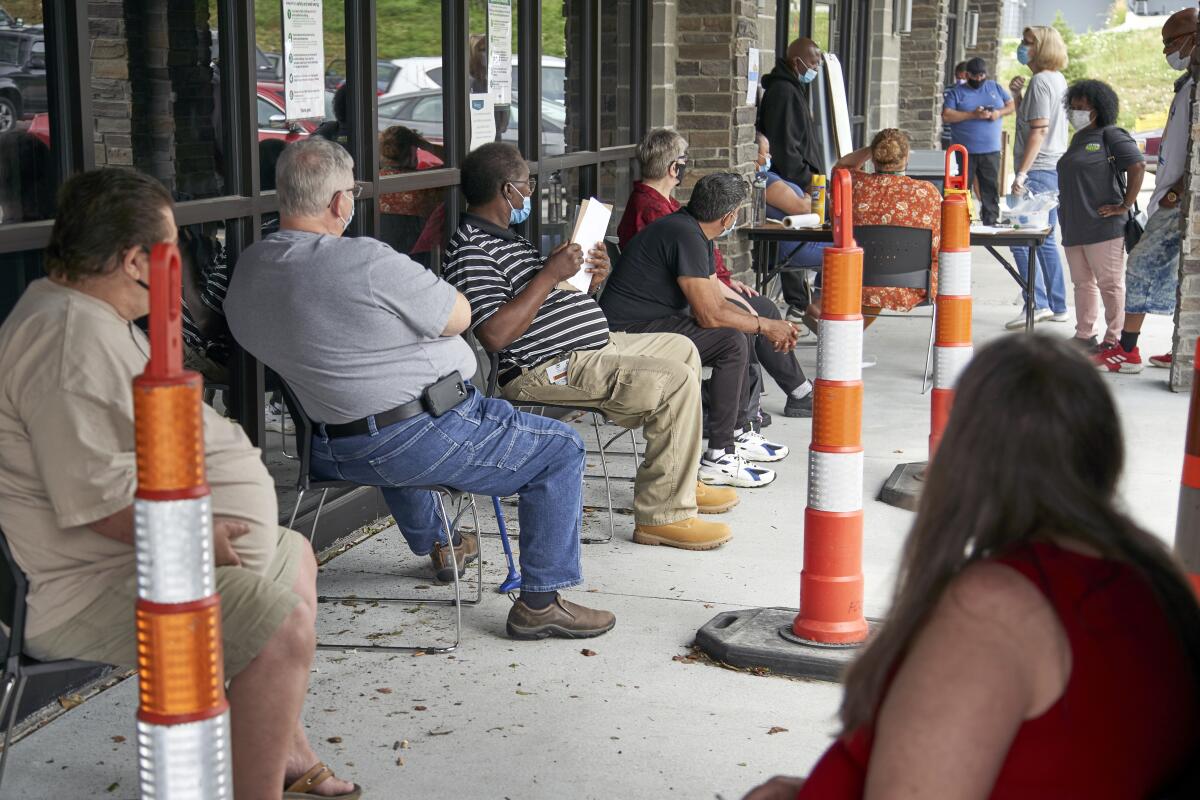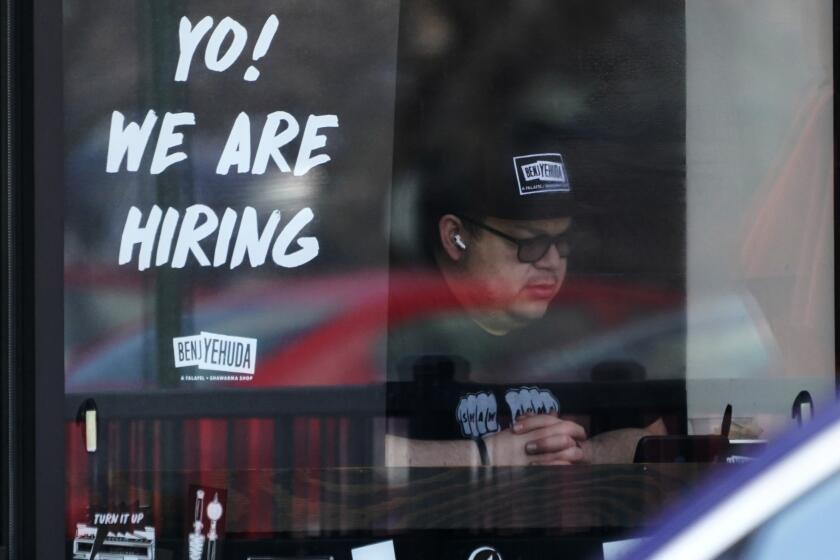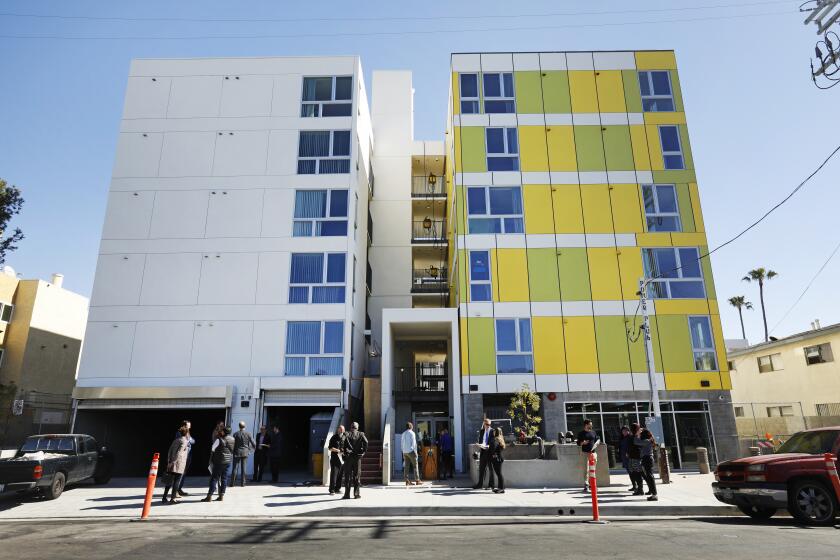Inflation is driving older Americans back to work

Julie Diaz stepped down from her job as a legal secretary last spring. Her retirement ended up being short — and not so sweet.
Now 70, Diaz is working day and night. She took a job in March at Home Instead, a home-care provider for seniors. Diaz works 12-hour overnight shifts in Phoenix taking care of a 79-year-old with Parkinson’s disease and mild dementia.
After work, she takes a nap, then drives more than 50 miles to baby-sit her granddaughters. Diaz’s daughter recently separated from her husband and started working at a restaurant, so she needs child care and help paying thousands in legal fees to her divorce lawyer.
Diaz exemplifies the push-and-pull dynamics resulting in more seniors in the U.S. labor force.
Millions of job openings and desperate attempts from employers to hire are opening the playing field for older workers. At the same time, a decades-high inflation rate and retirement savings gouged by the falling stock market are forcing many to work to make ends meet.
What started out as reentering the workforce opportunistically soon became a necessity.
“We’re all suffering from high gas prices, grocery prices. I’ve never felt such hard times in my life,” Diaz said. “People are staying inside their homes as much as possible because we can’t afford to go out.”
With workers still hard to find, more businesses appear reluctant to let go of those they have, even as they’re beset by inflation and slowing sales.
The size of the U.S. workforce is nearly back to pre-pandemic levels, but the participation rate — the share of the overall population that’s either actively working or looking for a job — has remained stubbornly depressed. By some projections, older generations can help fill the void.
Those ages 75 and older is the only age group whose labor-force participation rate is projected to grow over the next decade, although the base is smaller. The number of workers in that age range is expected to nearly double by 2030, when nearly 10% of the civilian labor force will be older than 65, according to the Bureau of Labor Statistics.
After a drop during the pandemic, BLS data from June already show rising employment among older Americans. There were more employed people ages 55 and older — the baby boom generation — last month than at any time in 2021. Within that age bracket, the number of full-time employees, defined as working at least 35 hours a week, is hovering near the highest level in data dating to 1986.
People were already working longer for several reasons, especially greater life expectancy. Now, inflation that was running at 9.1% in June — largely driven by higher costs for food, gas and shelter — has drawn more in. Not only is that hammering seniors on fixed incomes, but it’s also eating into the retirement savings of those who were able to sock money away.
Four in 5 U.S. adults ages 50 and older who hold financial products worth at least $10,000 are worried about inflation when they retire, according to a survey published last week by life insurance provider F&G. More than half of pre-retirees said they expect to work part time in retirement to cover day-to-day expenses.
Even before the pandemic, older Americans were financially vulnerable.
Any downturn is likely to be mild because many consumers have a financial buffer and the labor market still has legs.
A Kaiser Family Foundation analysis in late 2018 found that more than 15 million adults ages 65 and older, or about 1 in 3, are economically insecure, with incomes below 200% of the federal poverty line.
Similarly, 36% of Americans ages 65 to 69 can’t cover one year of minimal care without exhausting resources, according to a 2021 study from Boston College’s Center for Retirement Research. That figure is much higher for people without high school degrees, racial minorities and unmarried women.
Diaz is part of a significant portion of her employer’s workforce: Roughly a third of Home Instead’s 36,000 healthcare attendants are at least in their 60s. It’s one of the largest providers of personal home care in the U.S.
Employers are doing everything they can to hire and retain workers, whether that’s offering higher pay, better benefits or more flexible schedules. Although those are attractive perks to workers of all ages, seniors especially are taking notice.
Todd Pliss, founder of Rent A Grandma, said the number of applicants to his website for older adults seeking domestic-care jobs has risen about 25% over the last year.
“Grandmas don’t text or tweet while they’re watching your kids,” Pliss said. “They’re more settled in life.”
The Federal Reserve may have accelerated its attack on inflation by hiking interest rates. But that’s also driving up rents by deterring would-be buyers.
At Seniors4Hire, another hiring platform for older workers, there’s been a 20% increase in applicants since March and about 12% more employers advertising jobs, founder Renee Ward said. Part-time and lower-wage jobs are common.
“We need to see more high-paying salaried jobs going to people 55-plus,” Ward said.
AARP, the nonprofit, nonpartisan organization for Americans 50 and older, is trying to address that. Since 2012, more than 1,000 companies and institutions across industries — including Apple Inc., McDonald’s Corp., Marriott International Inc. and Macy’s Inc. — have signed AARP’s pledge to give older workers equal job opportunities.
Hundreds of employers are advertising jobs on AARP’s website, including Hershey Entertainment & Resorts.
At its namesake theme park in Pennsylvania, the company is hiring for a water park attendant, massage and nail technicians and a greeter at the main lobby to the Hershey Lodge. More than 25% of Hershey’s workforce is 50 or older, said director of talent acquisition Angie Meyers, including 23% in seasonal and customer-facing roles.
As for Diaz, she’ll be working for the long haul. Last year, it cost her about $40 to fill up her gas tank, but now she forks over closer to $60. She’s also helping pay the rent for an adult granddaughter who recently lost her job at a car dealership.
“If I didn’t have this job, I wouldn’t be able to help my family,” Diaz said. “As long as my health is good, I will do it.”
More to Read
Inside the business of entertainment
The Wide Shot brings you news, analysis and insights on everything from streaming wars to production — and what it all means for the future.
You may occasionally receive promotional content from the Los Angeles Times.













